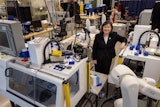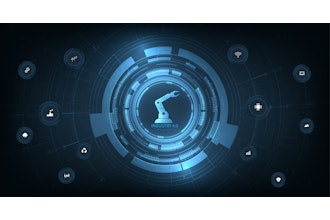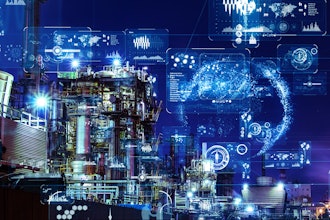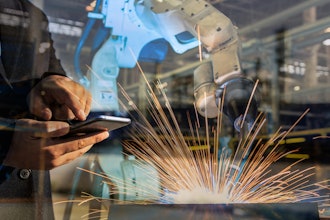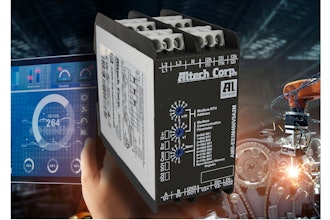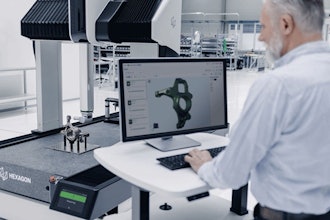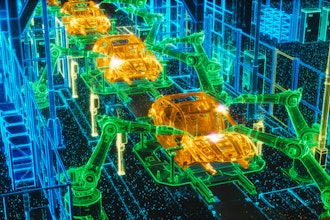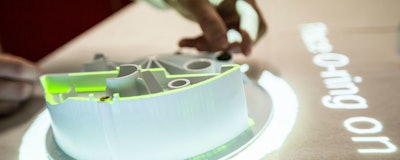
 Paul Ryznar
Paul Ryznar The manufacturing industry is built on a foundation of innovation — myriad parts, processes and practices that leverage technology in exciting new ways, building upon previous advances to continue the forward march of progress.
Oftentimes these innovations are relatively small — incrementally moving the industry forward and making manufacturing processes safer, more efficient, more productive and more profitable.
Every so often, however, something big — and potentially transformative — improves and enhances manufacturing processes not in baby steps, but in leaps and bounds. Whether that is a new technology, a new approach, or a new category of innovative tools or practices, these are the true “game-changers,” that could remake the industry in a profound and lasting manner. One area with the promise to drive that kind of transformative innovation is augmented reality, a disruptive suite of systems and technologies that delivers hands-on guidance and instruction with a dynamic, interactive and adaptive set of real-time instructions and integrated audio and visual cues.
While augmented reality may sound futuristic, it is far from science-fiction: augmented reality technologies are already being deployed in factory floors around the world, fundamentally changing the way that countless products are manufactured. From automotive to medical device manufacturing and everything in between, augmented reality is now playing a pivotal role in improving safety, reducing errors and enhancing efficiencies.
Some of the most advanced augmented reality systems utilize a digital projection technology that overlays a virtual operating “canvas” onto the work surface. When combined with visual and audio cues, no-faults-forward functionality (a particularly desirable feature at a time when consistency, quality-control and customization challenges challenges can lead to troubling and potentially costly legal liabilities), and specialized tools that work in concert with equipment already in place such as machine vision cameras and torque wrenches, it is easy to see why augmented reality is being adopted so enthusiastically by growing numbers of organizations.
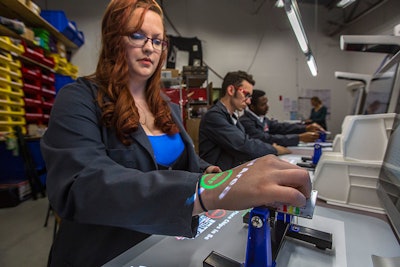
Augmented reality enables manufacturing professionals to receive sophisticated instruction, detailed direction, and organized mechanisms that ensure appropriate pacing and sequencing. The right materials. The right tools. The right steps–completed the right way and in the right sequence. The right augmented reality platform is like having an interactive and adaptive guide walking you through every step of the process–and checking your work as you go.
While the technology at the heart of these augmented reality systems — a combination of industrial strength projection technology and specialized software — may be complex, simplicity is actually a core component: much of the appeal and efficacy of augmented reality is based on its intuitive and user-friendly nature. A familiar example of augmented reality in action in most people’s everyday lives is the powerful GPS and mapping functionality in almost every smartphone and mobile device. While mapping and way-finding applications rely on a mind-boggling degree of high-end technology, the user experience is straightforward, interactive and responsive. Many GPS apps give audio as well as visual directions, prompting drivers to make the right turn and gently correcting if they head off course. Imagine a similarly user-friendly, powerful and effective digital roadmap in the world of manufacturing. It is a different context, but the result is the same: getting where you need to go safely and in the most efficient way possible.
In addition to streamlining and error-proofing processes, augmented reality technology can improve manufacturing outcomes by generating digital “birth certificates” and detailed process data for each part built. This level of sophisticated metrics and tracking helps to identify bottlenecks and other challenges, makes it possible to immediately identify the source of a problem, and generates the kind of detailed and constructive feedback that helps make workers more productive.
Other benefits of augmented reality systems include:
- The ability to leverage and integrate specialized tools and equipment like programmable machine vision cameras and torque guns. This makes augmented reality solutions an ideal fit for processes that demand extreme precision and come with extraordinarily tight tolerances.
- Fully programmable functionality that allows manufacturers to toggle between different processes by simply pushing a button or scanning a bar code.
- The capacity to be utilized as a mechanism for detailed inspection, training, part kitting and logistics support.
- Can accentuate or even replace traditional quality control and inspections processes–something that can potentially save enormous amounts of money and logistical headaches.
For the manufacturing industry, augmented reality has a special appeal: it improves the work and efficiency of manufacturing professionals, it does not replace them. At a time when there are justified employment concerns throughout the industry about the implications of more automation, augmented reality is a welcome middle ground. It is far from a compromise, however. The growing popularity of augmented reality is ultimately based on something very simple: it works. Some automotive manufacturers that have integrated augmented reality platforms into their operation have achieved eye-opening results, including a dramatic 80-90 percent reduction in errors, a cycle time that was essentially cut in half, and a bottom-line boost in throughput of around 95 percent.
Regardless of the manufacturing environment, those are remarkable numbers. And when you consider the degree to which the most powerful augmented reality solutions help to mitigate risk, reduce cost and complexity, enhance customization and improve efficiency, it is unsurprising that more manufacturing professionals are seeing their everyday reality “augmented” by promising new tools and technologies.
Paul Ryznar is the Founder, President and CEO of OPS Solutions.
